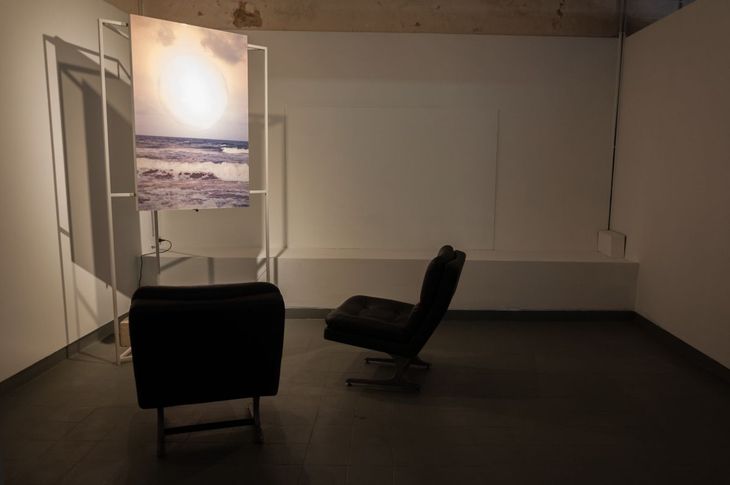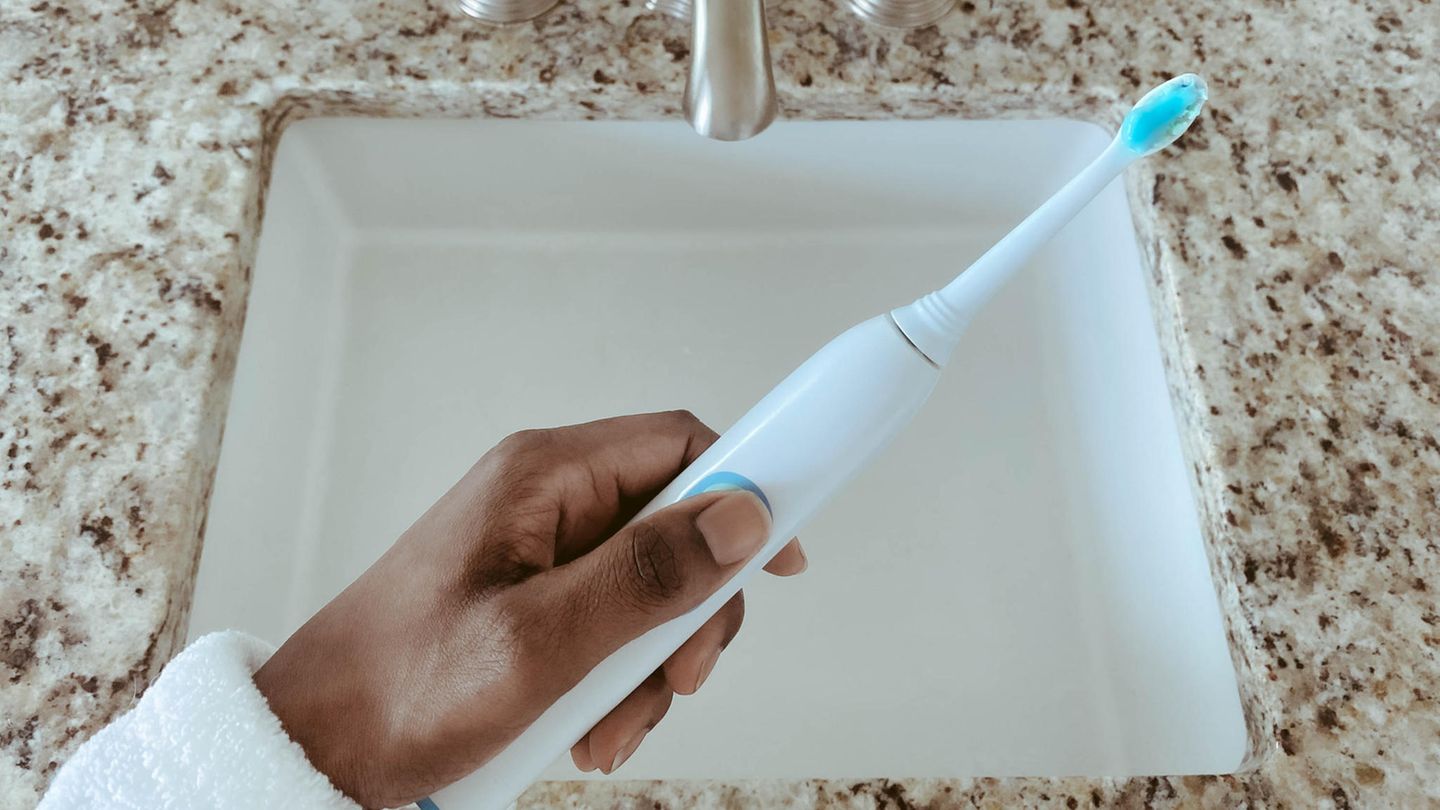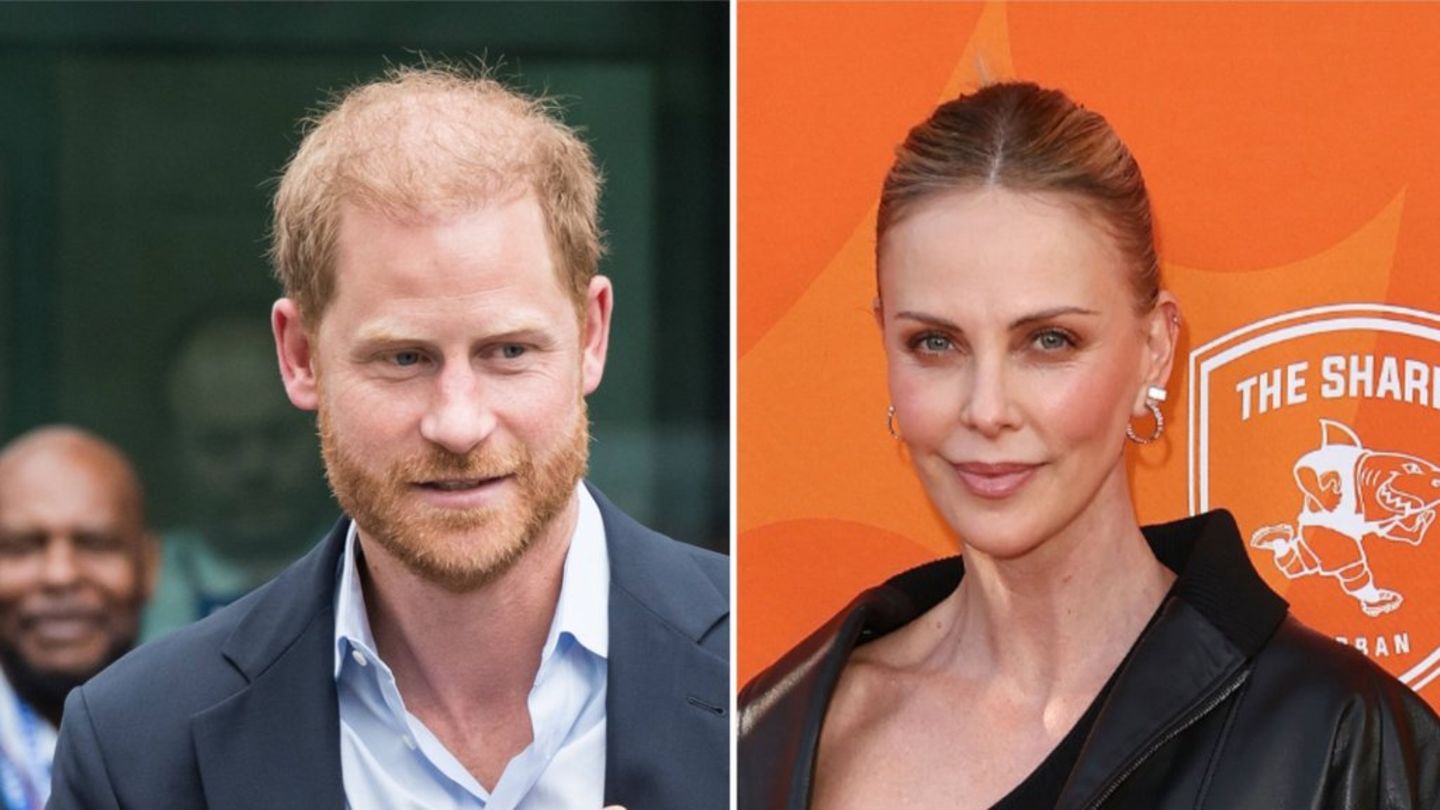It was a blue placeby Olivia Funes Lastra, cured by Javier Soria Vázquez, is presented as an immersive and multisensory installation that integrates painting, text, video and sound. The proposal configures a poetic landscape in the form of a archipelago: the works are arranged in the room as habitable islets, which the viewer can travel and live with the body and the senses.
The writing appears in multiple forms: on a large scale, in small leaves, projected on translucent fabrics and reproduced by speakers distributed in different parts of the space. As the installation is traveled, fragmentary stories emerge (some poetic tone) that expand the experience of the image and matter.
The paintings, of different formats, are integrated into that textual and sound framework to build an enveloping micromundo. “They are like islets in which the spectator can stop and inhabit them,” says the curator. The texts, written by the artist herself, are presented as fragments of a major, unbarkable story, which appears and dissolves, breaking any intention to set a stable memory.
In this exhibition, Funes Lastra displaces the center of gravity of his practice towards writing, integrating it as a stroke, image and sound. The overlap of texts, projected images and sound records overflows the limits of the pictorial to activate an emotional memory that appeals to the intimate, the sensory and the poetic. The artist proposes an experience that reconstructs and transmits emotional states linked to places inhabited in the past.
Bio of the artist
The work of Olivia Funes Lastra (Wellington, 1995) explores the analogies between language, memory and architecture in the context of migration and hybrid identities. Its practice is transdisciplinary: it covers installation, video, text and performance, always from a pictorial view.
Color and textiles are its tools to build a living memory of places and languages. Through painted fabrics, create sensitive architectures that invite to be inhabited. These transient spaces function as mental constructions, at the same time fictional and real, and are often activated in collaboration with other performers, forming a collective, nomadic and hybrid body.
His work is crossed by the notion of translation in an expanded sense. With an experimental and progressive approach, combines fabrics, languages, colors and strokes as in a Patchwork. The textile, material chosen by its transversality and symbolic burden (linked to female work and nomadism), structures a painting in transit, in permanent transformation.
Training and Trajectory:
He graduated in the École Nationale Supérieure d’Arts in Paris-Cergy (2020) and conducted the program of artists of the Torcuato Di Tella University (2021). Its painting-whatever installation is part of the public collection of the Frac île-de-France. He was a resident in the House of Velázquez (Madrid, 2023–2024) and currently continues at the Cité Internationale des Arts (Paris). His work has been exhibited in institutions such as the Las Cigarreras Cultural Center (Alicante), the 17th Biennial of Lyon, the French Institute of Madrid, the Fracardie, the Di Tella University and the CCK, among others.
Final art 2
In room 2, Eva and Water Poeticsby Victoria García Valenzuela, it is an installation that invites an intimate and deep dialogue between image, word and technology. From an analog photography translated into digital language, the artist worked with specially trained artificial intelligence (which he called Eva) with a corpus of poetry written by Argentine and Spanish women since 1920.
The piece proposes a sensitive rereading of those voices of the past, often silenced, who raised their word on the territories, struggles, affections and identities. At the same time, it subverts the modern machine paradigm as a productive tool, and replaces it with an idea of horizontal collaboration between the algorithm and human sensitivity.
Eva does not repeat or reproduce: interprets, dialogue, rewritten. Thus, the work activates an expanded poetic of water and memory, where the limits between the human and the artificial dissolve, between the visual and the verbal.
Bio of the artist
Victoria García Valenzuela (Argentina, 1987) is a multidisciplinary visual artist. He trained in photography and multimedia arts (EAF, UNA) and studied author photography in Efti, Madrid. His work, eclectic and conceptual, crosses photography, installation and technological experimentation.
She has been awarded the second place in the National Hall of Visual Arts (2022) and scholarships of the National Fund of the Arts and Cultural Broadcast. He participated in Clinics with Guillermo Uno, Walter Barrios, Augusto Zanela, Raúl Flores, and Workshops with Ernesto Romeo, Constanza Piña, Ataulfo Pérez Aznar and Alejandro Almaraz.
His work was exhibited in the Libertad Palace, the San Martín Cultural Center and in collective samples in Argentina and abroad. He currently lives and works between Buenos Aires and Madrid, where he has his workshop.
UNGALLERY
Minister Brin 1335, La Boca
Thursday to Saturday from 2 pm to 6pm
Until: August 16
Source: Ambito
I am an author and journalist who has worked in the entertainment industry for over a decade. I currently work as a news editor at a major news website, and my focus is on covering the latest trends in entertainment. I also write occasional pieces for other outlets, and have authored two books about the entertainment industry.




